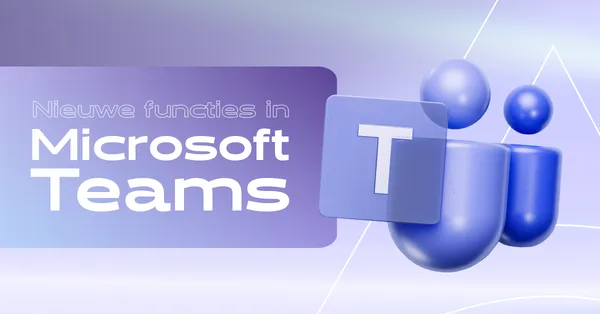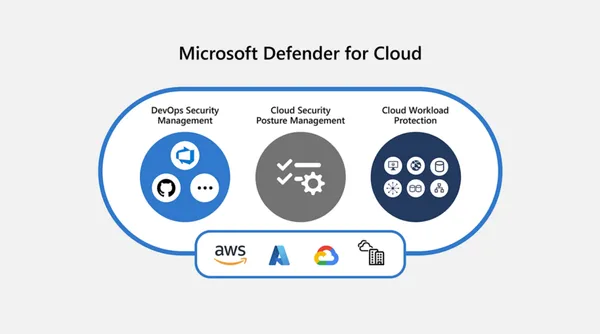
Knowledge base
January 27, 2023
What is ChatGPT? All you need to know
ChatGPT has taken the world by storm, and it’s easy to see why. The revolutionary chatbot AI can perform a surprising number of tasks, from carrying out a conversation to writing an entire term paper.
The ChatGPT chatbot is so smart that The New York Times reports that it represents a “red alert” to Google’s search activities. And Google subsidiary DeepMind is reportedly releasing its own chatbot in beta, called Sparrow, sometime in 2023.
Don’t worry, this article is still written by a human – but if you want to see how ChatGPT writes, check out the interview we conducted with the AI about what it is and what it can do. We know that many people are trying to figure out how to use this new technology and what its limitations are.
ChatGPT is “an artificial intelligence trained to help with a variety of tasks.” More specifically, however, it is a language model AI designed to produce human-like text and is designed to talk to humans, hence the “Chat” in ChatGPT.
The “GPT” in ChatGPT comes from GPT-3, the learning model used by the ChatGPT application. GPT stands for Generative Pre-trained Transformer and this is now the third iteration of this language model.
Practically, this means that to use ChatGPT, you present the model with a query or request by entering it in a text box. The AI then processes this request and responds based on the information it has available.
In the case of ChatGPT, the information available – or trained with – is software documentation, Web page programming languages and more. This makes it an incredibly powerful tool capable of answering questions on a wide range of topics, making recommendations and even generating written content.
ChatGPT is currently a free service in the research phase, according to
OpenAI
. Most likely this will change in the future, although there is no official word yet from OpenAI.
However, there are two pricing models that currently give us some insight into what ChatGPT might cost. The first is the
pricing structure used for OpenAI’s APIs
such as the image creation AI DALL-E and the Davinci language model. These APIs are priced on a per token or per image basis, so Open AI could use a similar system to offer ChatGPT as a service with a fixed cost per request.
The other option is a $42-a-month professional subscription offered to selected users. OpenAI has not officially offered this professional price range, but some users have taken to Twitter and tweeted about their experience with the service.
According to these tweeted screenshots, the “Professional Plan” offers access even when demand is high, faster responsiveness and priority access to new features as they become available. One user with access to the Professional Plan, Zahid Khawaja, tweeted video using the pro model, and it certainly generates responses faster than the free layer.
If you are one of those selected to access the professional layer, the option to subscribe is available under your account settings.
WHAT CAN YOU DO WITH CHATGPT?
This gets to the heart of an important fact about ChatGPT: it cannot yet completely replace people. As a recent Forbes article highlights, businesses and individuals can use it for many tasks – from market research to content creation to automating parts of the sales and customer service process.
Some ChatGPT use cases include:
- Text generation for news articles, fiction and poetry
- Summarize longer documents or articles
- Answer questions as a possible replacement for Google Search
- Generating story ideas or headlines
- Generate product descriptions, blog posts and other content types
- Function as a tutor for homework questions or problems
ChatGPT still has limitations in terms of function, can make mistakes and can plagiarize. So you will probably still have to have a human overseeing the work that it does, prove the work that it does, or be very precise in how you limit the work that it does. Otherwise, this time-saving technology may cause you more problems than it solves.
WHY DOES CHATGPT SOMETIMES NOT WORK?
ChatGPT has limitations in terms of how much it can handle at one time, so it limits the number of users who can access it at any given time. This is the most common reason it does not work, because if ChatGPT is at capacity, you cannot log in. One of the big selling points of the aforementioned Professional Plan seems to be that you get priority access, hopefully avoiding this problem.
Apart from this roadblock, ChatGPT may still suffer from technical glitches like any other site or app. It may have server errors that prevent it from working, or if you have a poor Internet connection, you may have trouble using it successfully.
IS CHATGPT OPEN SOURCE?
ChatGPT is not open source. While the company
was originally founded in 2015
as a nonprofit organization, it has since shifted to
a for-profit enterprise
. As of 2020, Microsoft is the only outside party with access to the GPT-3 source code that powers ChatGPT. Given that
Microsoft
alone committed to a further “multi-billion dollar multiyear investment” seems unlikely to change this position any time soon.
There are some attempted open source competitors for ChatGPT. Recently, developer Philip Wang released PaLM + RLHF, “a text-generating model that behaves similarly to ChatGPT.” According to
TechCrunch
, this model combines Google’s PaLM language model with a technique known as Reinforcement Learning with Human Feedback. However, this open source model is not already trained like ChatGPT, so it is not a practical solution unless you have a wealth of data to learn from.
IS CHATGPT SAFE? DOES IT STORE MY DATA?
That’s a complicated question. In a sense, yes, ChatGPT is safe. If you log in to your OpenAI account and use it, it will not install anything malicious on your device. Your only concern would be that OpenAI suffers a data breach and exposes your personal data, which is a risk with any online account.
Still, you should be aware of what data you place in ChatGPT. According to OpenAI’s
ChatGPT FEATURE QUESTIONS
article, ChatGPT stores your conversations and they are reviewed by OpenAI for training purposes. So do not enter sensitive data as it would be stored by the system. If you want to delete your data, you must delete your entire account, which is irreversible. To do this, go to this
OpenAI help page
and follow the instructions.
Moreover, there are deeper ethical and moral concerns with AI – especially since the AI model has neither ethics nor morality. As
Bleeping Computer
explains, ChatGPT may unknowingly be offensive in its responses, cultivate misinformation, write phishing emails, be sexist, racist, etc. Because the AI model pulls information from the Internet to form its knowledge base, it can potentially pull the harmful stuff without knowing it is harmful. So keep this lack of safeguards in mind when using the app.
CAN CHATGPT DO THINGS WRONG?
Yes. ChatGPT can absolutely get things wrong. OpenAI is also open about this, stating that “ChatGPT sometimes writes plausible-sounding but incorrect or nonsensical answers.” This is because the AI does not inherently know right from wrong; it must be trained to know the difference – which is incredibly difficult.
There is no source of objective truth in reinforced learning training, and OpenAI even says that if the model is trained to hedge its bets too much, it might refuse to answer questions it can answer correctly.
In addition, the wording of requests is important. ChatGPT may change its ability to answer or not answer a request simply based on how the question is worded. ChatGPT also has inherent biases because of how it learns. The data it learns from has inherent biases, and because the AI model does not understand this, it cannot properly pivot out of those biases without specific requests.
For example, this
Fast Company
article highlights UC Berkeley professor Steven Piantadosi who
tweeted
from a case where the AI wrote a set of code that filtered good scientists out of bad scientists based on their race and gender, without specifically asking them. The AI is not racist or sexist, but because of the inherent biases in the data it learned, it picked up those same biases without knowing it was doing so. So be careful and verify what ChatGPT offers you.
PLAGIARIZES CHATGPT?
First of all, yes, ChatGPT can plagiarize. It pulls data from all over the Internet as part of its model training, and some of this data is not considered common knowledge. If you include something in a written work and it is not considered common knowledge or you are not the primary source, you should cite it to avoid plagiarism. While the chatbot can provide citations and in some cases
even fool plagiarism checkers
, you must be vigilant when using the chatbot to avoid plagiarism.
It is not only students who should be concerned about this problem. Recently
is futurism
revealed that some CNET articles that used AI to produce content plagiarized competitors, even though the publisher does not use ChatGPT.
CAN PEOPLE DETECT IF YOU ARE USING CHATGPT?
As ChatGPT becomes more common in writing, people are starting to create AI tools to detect ChatGPT or similar AI models in written content. GPTZero is one such tool, created by Princeton University student Edward Tian. According to
NPR
, GPTZero uses “perplexity” and “burstiness” scores to measure the complexity of text.
The theory is that humans will write in a way that AI determines is more complex than content written by other AI. GPTZero was recently able to distinguish between an article from The New Yorker and a LinkedIn message written by ChatGPT, so there is some early evidence that it works in detecting ChatGPT use.
CAN YOU CODE WITH CHATGPT?
ChatGPT can write and debug code – in fact, it is the first example OpenAI uses on the ChatGPT site to show what ChatGPT can do. In fact, you can even write the code for simple websites and applications in ChatGPT. ChatGPT can write in multiple languages, including JavaScript and Python.
Now it does have some limitations, as this article from TechTarget points out. It can’t write complex code yet, so if you want to become a developer, you still have to learn to code. It can also produce just the code; you would still have to build the site or app yourself and all that process entails, you would just have the code already written out.
Source: tomsguide
Want to know more?

Related
blogs
Tech Updates: Microsoft 365, Azure, Cybersecurity & AI – Weekly in Your Mailbox.









